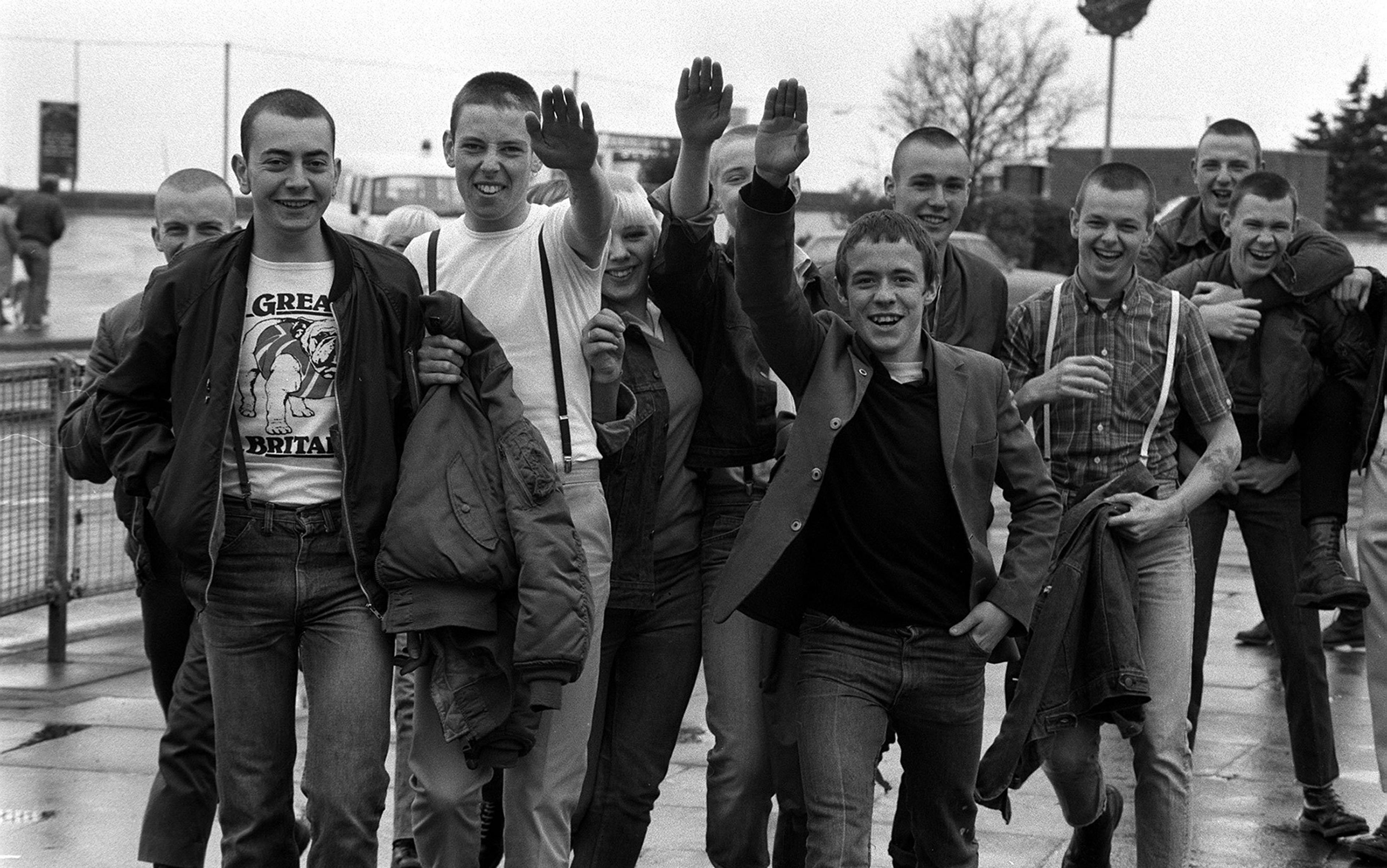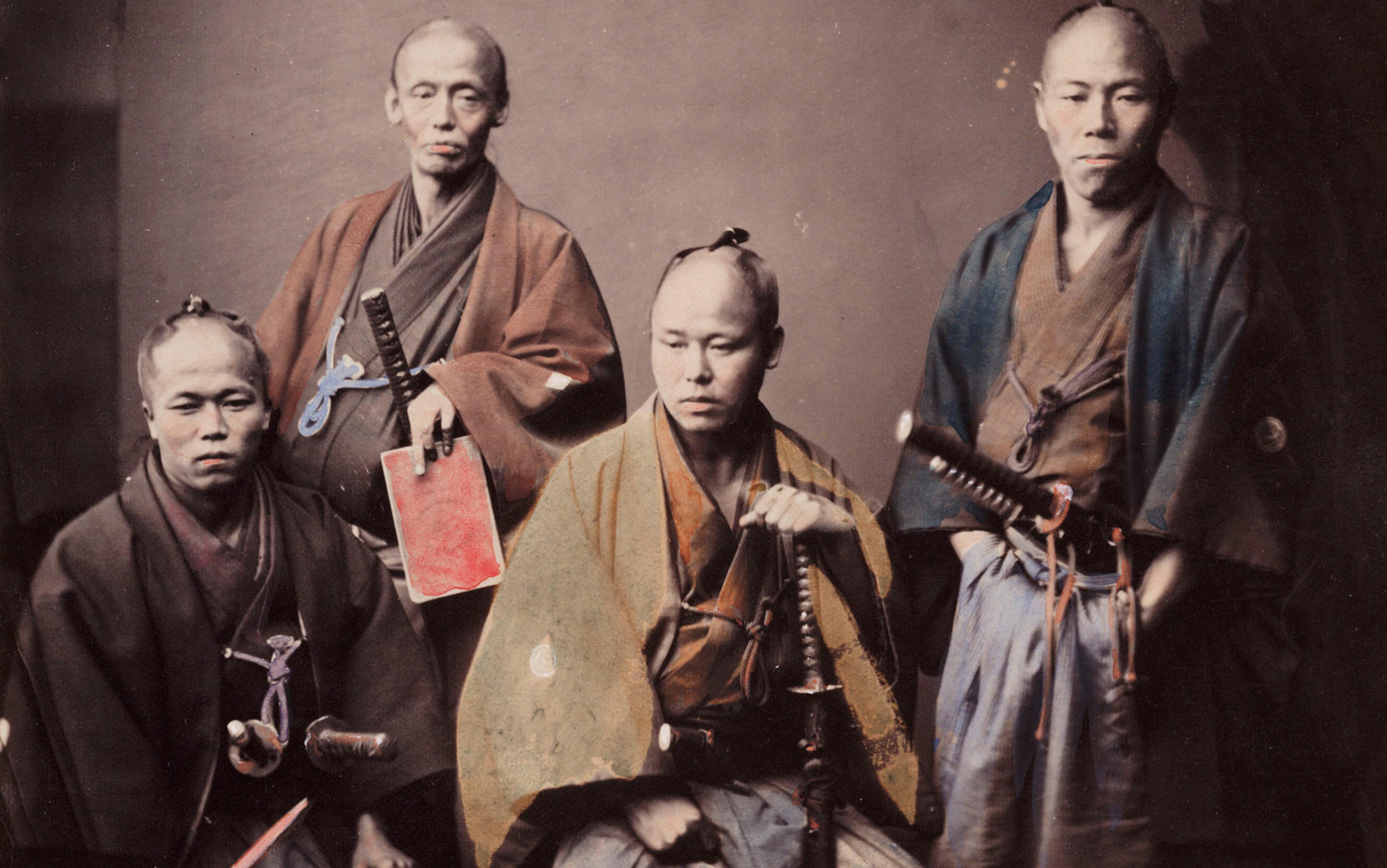The public outrage following the murders of George Floyd, Breonna Taylor and Ahmaud Arbury in 2020 flooded bookstores in the United States with orders for publications such as Robin DiAngelo’s White Fragility and Ibram X Kendi’s How to Be an Antiracist, as well as for classic novels by Toni Morrison and James Baldwin, and essays by Angela Davis and Audre Lorde. At the same time, the British Right-wing propagandist Milo Yiannopoulos posted ‘An “America First” Reading List’ to the extremist social media network Gab. Co-authored by the American blogger Michelle Malkin, this ‘gift for young conservatives’ compiles nearly 200 books sorted by theme (literature, Christianity, religion, culture, US politics, race, economics and ‘the West’), priority, and level of difficulty.
Pillars of the canon (Dante’s Divine Comedy; Augustine’s Confessions; Shakespeare’s tragedies) mingle liberally with stalwart fetish tracts (The Art of War by Sun Tzu; The Decline of the West by Oswald Spengler), conspiracy theories (‘The Protocols of the Elders of Zion’; the Unabomber’s manifesto) and titles from contemporary conservatism’s most popular pundits, among whom both authors immodestly insert themselves, allotting three to four slots each: more than other conservative commentators such as Dinesh D’Souza and David Horowitz get, and as many as Ann Coulter. The more surprising omissions – Ayn Rand, Friedrich Nietzsche – are supplanted by opposition research. The Communist Manifesto by Karl Marx and Friedrich Engels is appended with the note: ‘It’s wise to understand where your enemy is coming from,’ while Ta-Nehisi Coates’s Between the World and Me (2015) provides, it is said, ‘an account of racial history by one of the Left’s most celebrated writers’.
The accusations of ignorance and philistinism so frequently lobbed at the Right are not without a realistic basis: higher levels of education have been shown to correlate with increasingly liberal views, and the anti-intellectual rejection of science, among other bodies of knowledge, has become a defining characteristic of Right-wing populism’s current iterations from India to Brazil and Washington to Moscow. But it’s also true that Donald Trump and his son Donald Trump Jr are New York Times bestselling authors. Prior to becoming the poster boy for Brexit, Boris Johnson was a Classics scholar at Oxford.
Before sitting heads of state were asked to complete cognitive exams, there was George W Bush, whose lack of articulacy gave a deceptively humble face to ‘compassionate conservatism’ (two Ivy League degrees notwithstanding) and served as ample cannon fodder to the liberal feedback loop, distracting the country from the atrocities of Dick Cheney and Donald Rumsfeld. While some conservatives clung to their guns, religion and visions of a leader with whom they could see themselves having a beer, others longed for the artful cultivation of a William F Buckley, whose patrician elitism had, by this millennium, become available only in pale imitation: a bowtie here, a wilful misreading of George Orwell there.
Though it might have reached its apex in the mid-20th century, between the extinguishing of Axis designs on world domination and the popular demand for civil rights, conservatism’s intellectual strain is as alive and well as a tradition can be, mostly online, amid a flurry of false premises. While the heirs of the National Review magazine and their more centrist allies wage culture wars in hardcover and wide circulation, the literati to their Right self-publish on message boards, Amazon and as shared PDFs; where their mainstream counterparts uphold the stern, ratiocentric rhetoric of their aristocratic forebears, the poets of neofascism, the ‘Dark Enlightenment’ and the alt-Right are proudly uncredentialed and crude, pushing the spirit of irony championed by T S Eliot, the arch-traditionalist of modernism, to such extremes that the conditions of literature and the merits of art appear secondary to the sincere and uncensored dissemination of hate. To define Right-wing literature is to ask what literature is and what it’s for, but the most ready-to-hand answers (beauty, truth, empathy, expression) are incongruous to conservatism’s means, if not to the perverse utopianism of its final objectives.
In 1996, the Chilean poet and novelist Roberto Bolaño – who survived Augusto Pinochet’s CIA-backed coup in 1973 and died in Barcelona 30 years later – had his second novel published: Nazi Literature in the Americas, which presents itself as an encyclopaedia of Right-wing writers. The resulting taxonomy is pointedly broad, encompassing seemingly benign dowager pastoralists alongside academic critics of Jean-Paul Sartre, authors of pulp science fiction, conceptual poetry, paeans to football, and white-supremacist newsletters, summarily proposing a working definition of ‘Nazi’ that isn’t relegated to the historical past. Bolaño’s fascists are fictional, but his speculative history neatly maps on to scholarly surveys of Right-wing literature in the postwar era, which has thrived conspicuously in countries such as the US, unburdened by denazification and empowered by the freedom of speech that its authors would deny their opponents.
The Western canon is not so lacking in fascists that they must be studiously unearthed or invented, as Bolaño has. In Germany, Gottfried Benn was an early Nazi sympathiser, but withdrew his support following the Night of the Long Knives in 1934; the affinities of Carl Schmitt and Martin Heidegger were less ambivalent and, decades later, the wartime activities of the Nobel laureate Günter Grass as a soldier in the Waffen-SS, and of the Yale professor Paul de Man as a journalist for Belgian collaborationist newspapers, were revealed with differing degrees of grace. Benito Mussolini’s National Fascist Party in Italy was a haven for the avant-garde: the so-called Fascist Manifesto (1919), which inspired the Party, was co-written by the Futurist F T Marinetti, and early supporters included Luigi Pirandello and Curzio Malaparte, though both writers turned on Mussolini prior to the Pact of Steel in 1939.
The French breed of antisemitism was strong in the novelist Louis-Ferdinand Céline, who dined in the German embassy as late as February 1944. And among Americans abroad, Eliot’s dog whistles were largely drowned out by Ezra Pound, who wrote pro-Führer columns for Italian and British publications. Many, but not all, of these writers eventually recanted their political indiscretions, and some became active antifascists, fighting for the resistance in prose, verse and drama, on the airwaves and the frontlines. The relative dearth of prominent intellectuals for Trump shouldn’t suggest that the appeal of authoritarianism to such great minds was a historical aberration: a reactionary tendency haunts modern thought.
In his book The Reactionary Mind (2011), the US political theorist Corey Robin traces a history of conservatism from the Enlightenment to Trump’s The Art of the Deal (1987); in it, Robin has counterrevolutionary ‘philosophers, statesmen, slaveholders, scribblers, Catholics, fascists, evangelicals, businessmen, racists, and hacks’ all seated together:
Hobbes next to Hayek, Burke across from Palin, Nietzsche in between Ayn Rand and Antonin Scalia, with Adams, Calhoun, Oakeshott, Ronald Reagan, Tocqueville, Theodore Roosevelt, Margaret Thatcher, Ernst Jünger, Carl Schmitt, Winston Churchill, Phyllis Schlafly, Richard Nixon, Irving Kristol, Francis Fukuyama, and George W Bush interspersed throughout.
For Robin, conservatism is not a coherent doctrine so much as ‘an ideology of reaction’ pulled, since the French Revolution, in countervailing directions: toward ‘a critique and reconfiguration of the old regime’ on one hand, and ‘an absorption of the ideas and tactics of the very revolution or reform it opposes’ on the other. One can see this tension in the simultaneity of the Trumpian Right’s aspirations to ‘drain the swamp’ and their co-option of ‘cancel culture’ rhetoric as clearly as in the Third Reich’s double-edged critique of Weimar decadence and Christian slave morality. While progressive movements tend to stall over arguments concerning hermeneutics and identity, conservative thought evolves dialectically through patricide and plagiarism, cannibalism and grift.
The lone-wolf vigilante, the patriot and the self-made man draw from the myth of the rugged individual
So have reactionary letters progressed in the decades since the German philosopher and sociologist Theodor Adorno announced that ‘to write poetry after Auschwitz is barbaric’? In Europe and Latin America, neofascism found a home in works of esoteric philosophy and the occult by writers such as Miguel Serrano, Julius Evola and Savitri Devi – who emphasised the pagan and Indophile aspects of Nazi mythology – and provocateurs from Michel Houellebecq to Jean Raspail, whose novel The Camp of the Saints (1973) is a favourite of Steve Bannon’s.
In her survey of Right-wing literature in the US since the 1960s, Carol Mason identifies two concurrent threads that occasionally intersect. First, a mainstream that includes political nonfiction by the likes of Buckley and Milton Friedman at one end, and Fox News celebrities at the other; ‘serious’ literature published by the Agrarian ‘Fugitive Poets’ in the Sewanee, Southern and Kenyon reviews; popular fiction from Robert Heinlein to Tim LaHaye; as well as a massive, often evangelical, industry of self-help. The second thread is an underground of self-published and small-circulation texts distributed through mailing lists, organisations such as the John Birch Society and the Ku Klux Klan, and other alternative networks catering to contents and readerships too incendiary for the average bookstore. The standard editions of this thread are Ted Kaczynski’s Technological Slavery (2010), James Mason’s Siege (issued serially between 1980 and 1986 by the National Socialist Liberation Front, an offshoot of George Lincoln Rockwell’s American Nazi Party), and William Luther Pierce’s novel The Turner Diaries (1978), which has inspired multiple acts of terror (the 1995 Oklahoma City bombing most famous among them).
White, male and straight writers are in the majority in Carol Mason’s study, but there are exceptions, including Dinesh D’Souza, Taylor Caldwell and Andrew Sullivan. Robin, too, cites Alexander Hamilton, Benjamin Disraeli, Allan Bloom and Sarah Palin, to write: ‘From the beginning, conservatism has appealed to and relied upon outsiders.’ The frontier archetypes of Republican discourse – the antiestablishment maverick, the lone-wolf vigilante, the rebel, the patriot and the self-made man – draw most explicitly from the bootstraps myth of the rugged individual at the heart of American exceptionalism, which conservative authors exploit wholesale. Mason argues that the boom in anti-liberal publishing in the mid-20th century was a direct reaction to the rise of ‘[t]he modernist antihero prone to exploring existential dilemmas’. The pro-life thriller Gideon’s Torch (1995) by Charles Colson, formerly Special Counsel to Richard Nixon, is representative of this literature in that its depiction of ‘Christian white men in a persecuted light demanded,’ as Mason writes, ‘a deft appropriation of oppressed peoples’ actual histories and a revisionism that ranged from outright Holocaust denial to comparisons that likened antiabortionists to abolitionists.’
The victim mentality proudly expressed in the idea that the European, Christian patriarchy is under siege is fundamental to reactionary thought. Referring to the Enlightenment philosopher Jean-Jacques Rousseau’s theory of pity, Robin writes:
Conservatives have asked us not to obey them, but to feel sorry for them – or to obey them because we feel sorry for them … Identifying as victims, they become the ultimate moderns, adept competitors in a political marketplace where rights and their divestiture are prized commodities.
This underdog pantomime is of course disingenuous, favouring a restoration rather than a redistribution of power, and starkly at odds with the heroes of modern conservatism: Nietzsche’s Übermensch, the ideal embodiment of the will to power; Rand’s John Galt and Howard Roark, models of libertarian independence, acting coldly in their own self-interest. This tension, between egoism and fear, pride and disgust, is the signature theme of the Right-wing romance, which privileges aesthetics in theory while eschewing them in practice, adopting a quasi-philosophical mode that is, at its best, as compelling as competent pulp. Conservative authors don’t persuade so much as they reinforce and, if their works are entertaining, the question remains: to whom?
Case in point: the 18 skinhead novels published by the New English Library between 1970 and 1980, reprinted in the early 1990s in six volumes as The Complete Richard Allen. Allen was one of many monikers used by the Canadian writer James Moffat, who died in England in 1993 after writing almost 300 books and who considered himself ‘an individual with experience in dealing with the teenage mind’, as he wrote at age 50, in his foreword to Skinhead Girls (1972). Twenty years later, by which time he admitted to consuming a bottle of Scotch a day, Allen explained to his publisher, George Marshall, that the series originated on a whim:
Some of my editors were having a party in London and one of them, a fanatical Chelsea fan, suggested a book about football aggro. My name was mentioned and since I had a reputation for being able to write faster than most others, he telephoned me. It was 10:30 at night and he explained the book was needed within a week. After some discussion I got three more days for research.
Allen’s hero, Joe Hawkins, was based on skinheads the author met the next day at a pub in east London. Curiously though, Allen’s first Hawkins novel, Skinhead (1970), begins not with the 16-year-old delinquent, but instead with his father, Roy, a dockworker torn over his union’s imminent strike:
He was completely disenchanted with this Labour government – but he wouldn’t abstain nor vote Tory. He would vote Labour as he always had; as his dad and his grandad had. It didn’t matter what he said between elections – that the long period of Tory rule had been the best in living memory – providing that when the day came, he could make his ‘X’ against the local Labour party candidate. In his constituency, Plaistow, the ineffectual hands on the helm of England counted for less than a man’s worth to an employer. 1926 and the ‘cloth-cap’ image had to be preserved. Forgotten were the affluent days of Tory rule. Forgotten were the massive debts piled on a staggering nation by yet another Labour administration. It didn’t count that Britain was being dictated to by the International Monetary Fund.
Such an editorial tangent would seem out of place on the second page of an ultra-violent novel for young adults, yet Skinhead was a sleeper success, selling in the hundreds of thousands. In the author’s notes that precede each volume, Allen distances himself from his protagonist, denying all charges of glorifying Hawkins, whom he identifies as ‘the epitome of society’s menace’, while at the same time decrying ‘the permissive age’ that paved the way for the ‘teenage cultism’ of the skinheads. More often than not, the white victims of Hawkins’s polished Dr Martens – an army sergeant, a buxom spinster, a police commander – serve as mouthpieces to explicate and defend the skinhead’s visceral prejudices against the less fortunate recipients of the boot: immigrants, Jews, women, Blacks, hippies and gays. Hawkins and his gang merely act on what their authority figures are thinking – and if the results are gruesome, Allen coyly asks, whose fault is that, really?
Skinheads embraced the traditional style of a white proletariat that was perceived to be endangered
This kind of doublespeak is a classic authoritarian gesture that points to the complex history of the skinheads, who emerged as a spawn of the mod subculture of Swinging London in the mid-1960s. Mods, skinheads and their 1950s predecessors, the Teddys, were singled out by the Jamaican-born theorist Stuart Hall and his colleagues at the Centre for Contemporary Cultural Studies at the University of Birmingham as representative illustrations of culture as ‘that level at which social groups develop distinct patterns of life, and give expressive form to their social and material life-experience’. For Hall, John Clarke and others – including Dick Hebdige, whose monograph Subculture (1979) explores the centrality of race relations to an understanding of ‘style’ – British youth trends opened a window to the forms through ‘which groups “handle” the raw material of their social and material existence’.
For mods, the trajectory was upwardly mobile, a working-class affiliation with the trappings of bourgeois modernity: Italian fashion, prescription pills, American soul and R&B records. This parody of class consciousness was inverted by the skinheads, who embraced the traditional style of a white proletariat that was perceived to be endangered – shaved heads, work boots, sturdy pants and braces – coalescing around the football fanaticism of their fathers (Hawkins is a West Ham supporter) and, ironically, the music of their increasingly West Indian neighbours: ska, rocksteady and reggae. The British Nationality Act of 1948 had helped to usher in the first major wave of Caribbean immigration to the United Kingdom and, by the 1960s and ’70s, racial tension was taut: the Conservative MP Enoch Powell delivered his ‘Rivers of Blood’ speech in 1968, which trickled down to youth culture, necessitating the formation of Rock Against Racism in 1976. The lyrical turn of Jamaican music toward Rastafari, pan-Africanism and Negritude throughout the 1970s alienated the original skinheads, some of whom grew out their hair to adopt a Clockwork Orange-inspired look (as Hawkins does in Suedehead, the 1971 sequel to his debut), but by the end of the decade, when the vulgarities of punk monopolised the tabloid headlines, a new, openly racist cohort appeared among the audiences of Oi! bands such as Sham 69 and Skrewdriver, and in the fray of the Southall race riots of 1979 alongside supporters of the National Front.
Even while blaming ‘the hypocrisy of the media’ for the maligning of skinheads, Allen’s publisher conceded in 1994 that ‘so-called Paki-bashing did and does occur’, though ‘Blacks, Greeks and even mixed-race gangs were at it too’, he hedges. One wonders what role Allen’s novels played in bridging the gap between the first and second generations of skinheads, from quasi-blackface to outright xenophobia. Allen waits hardly 60 pages to introduce Hawkins’s rival, Hymie Goldschmidt, who is supposed to disprove the notion that skinheads can’t be Jewish, so long as they hate ‘Israel with Arabian loathing’ and fervently deny ‘that the Jews were God’s “chosen children”’. Goldschmidt’s father, Solly, is an overblown caricature, who refuses ‘to belong to his native nation’, acting ‘on the belief that an Englishman was a sucker and that the Jew-boy was supreme when it came to making money’, greedily ‘accepting Council charity in the form of a home subsidised by the non-Kosher ratepayers’, and devaluing ‘the worth of the security he had by possessing a British passport’. As for Hawkins, he rapes women for sport, robs and assaults the men he fraudulently seduces and, at the end of Suedehead, receives four years in prison for beating an African activist to within inches of his life, screaming: ‘I don’t want niggers in London.’
The conventions of fiction and the accomplishments of literary theory – the intentional fallacy, the death of the author – shield Allen (and Moffat) from the effects of his language, but the frequency of its violence and the clumsiness with which he attempts to sneak in the poison smack of propaganda, steering the opinions of his young readers. Though, like any demagogue adept at manipulation, he confesses to doing no such thing: ‘Authority admits that young people are reaching “thinking age” much earlier than ever before,’ he says to the readers of Skinhead Girls. ‘So, to my fans, read on. Enjoy the freedoms of self-determination. Decide for yourselves. Nobody is twisting your arm to buy my book, but nobody should decide for you what is, or is not, your scene…’ The duplicity of this statement, coming from a man so intolerant of the ‘permissiveness’ of his time, would be at home on the teleprompters of today’s autocrats, taking advantage of a youthful thirst for freedom that is more politically potent and susceptible to distortion the less it has been interrogated, contextualised or hard-won.
In March 2016, Yiannopoulos and his colleague Allum Bokhari at the far-Right website Breitbart published their own ‘Nazi Literature in the Americas’, a taxonomy of alt-Right thought that differentiates ‘the intellectuals’ (the English philosopher Nick Land and the computer programmer Curtis Yarvin, aka Mencius Moldbug, of the neoreactionary Dark Enlightenment movement), the ‘natural conservatives’, ‘the meme team’, and ‘the 1488ers’ – referring to the movement’s neo-Nazi wing, whose name invokes the ‘14 Words’ slogan of white supremacy (‘We must secure the existence of our people and a future for white children’) and a coded shorthand for ‘Heil Hitler’ (H is the eighth letter of the alphabet). Seeking to excuse the alt-Right from its association with Nazis, Yiannopoulos and Bokhari (‘a gay man of Jewish descent and a mixed-ethnic half-Pakistani’, they are quick to add) dismiss the prevalence of jokes about the Holocaust, race-mixing and homosexual ‘degeneracy’ among sympathisers as ‘just about having fun’: a harmless enjoyment of ‘the mayhem and outrage that erupts when those secular shibboleths are openly mocked’.
Angela Nagle’s controversial study of the online culture wars, Kill All Normies (2017), credits the detached provocation of such discourse to a transgressive streak of literary history:
that can be traced from the 18th-century writings of the Marquis de Sade, surviving through to the 19th-century Parisian avant-garde, the surrealists, the rebel rejection of feminised conformity of postwar America and then to what film critics called 1990s ‘male rampage films’ like American Psycho and Fight Club.
Brushing with even broader strokes, Nagle loops in punk, Henry Miller, Norman Mailer, Romanticism, Dostoevsky, Maurice Blanchot and Michel Foucault, Ken Kesey and R D Laing, The Matrix (1999) – source of the ‘red pill’ metaphor – and Nietzsche. While not without some truth (Nietzsche, in particular, proves an evergreen obsession for angry young men), this genealogy assigns avant-garde bona fides to the alt-Right that its intelligentsia does not, in fact, deserve.
The narrative function has remained the same: to stoke bitterness and solitude into a politics of reaction
Ten months into the Trump presidency, BuzzFeed published an email from Yarvin to Yiannopoulos concerning the ‘endless tide of 1488 scum’:
Deal with them the way some perfectly tailored high-communist NYT reporter handles a herd of greasy anarchist hippies. Patronising contempt. Your heart is in the right place, young lady, now get a shower and shave those pits. The liberal doesn’t purge the communist because he hates communism, he purges the communist because the communist is a public embarrassment to him.
The same attitude is echoed in Bronze Age Mindset (2018), a tedious commentary on classical philosophy self-published by the Twitter user Bronze Age Pervert. After 100 pages of manipulating Empedocles and Heraclitus into refutations of evolutionary biology, civilisational progress, the liberation of women and LGBTQ groups, and the contemporary effeminisation of men (much of which omits definite articles in mock imitation of a caveman), the author concludes with a palaeoconservative call to action: remaining vigilant against the demonisation of the Russian president Vladimir Putin, but sympathetic to QAnon and Pizzagate; privileging male friendship over female companions; consuming the probiotic food supplement Gastrus, coconut oil and plenty of sunlight, without caring ‘too much about food, nutrition, and especially health’; memeing prolifically; and keeping the hate speech close to the chest:
Know when the snake is defending itself – don’t be a patsy. Your models must be those that have worked: Trump, Orban, the Italian movements now ascendant, Sebastian Kurz and his party in Austria. You don’t see these people marching around in hotel bellboy’s uniforms with a Sonnenrad and talking about the ‘Jewish Question’ and this other kind of role-play. [sic]
The minimisation of white supremacy as peripheral or of little consequence to reactionary movements is a dishonest trope of revisionist history beloved by neofascists, especially the accelerationist contingent, which draws inspiration from the intellectual tradition that Nagle circumscribes via Yarvin and Land’s Neoreaction (NRx) movement. In his book Harassment Architecture (2019), Mike Ma – likely the pseudonym of Mike Mahoney, who worked for Breitbart and Bannon’s production company, Glittering Steel, before he was banned from Twitter – blends the Nietzschean pastiche of Bronze Age Mindset with a flat, affected, first-person narration derivative of Houellebecq and alt-lit writers such as Tao Lin. Ma employs the typical disclaimer that his book – which combines flagrant misogyny, antisemitism, racism and homophobia with terroristic fantasies and appreciations of the indie rock bands My Bloody Valentine and Homeshake – is ‘purely fiction’, in the same way that the anonymous poster on the messaging board 4chan would downplay his trolling as innocuous ‘lulz’.
If Bronze Age Mindset and Harassment Architecture are any indication, the current trend of far-Right literature is pseudo-academic in its pretensions, but lacking in novel interventions: its Romantic environmentalism, neoclassical worship of the male physique, and its fixations on technological determinism and irony recall literature of the early 20th century, though its prose style has yet to pass high-school English. The narrative function, too, has remained the same: to stoke feelings of bitterness and solitude into a politics of reaction that is intellectually justified only after the fact. That young fascists want to be taken seriously as writers is perhaps not as troubling as their desire to be cops – if nothing else, it could be taken as evidence that the novel is far from dead.






